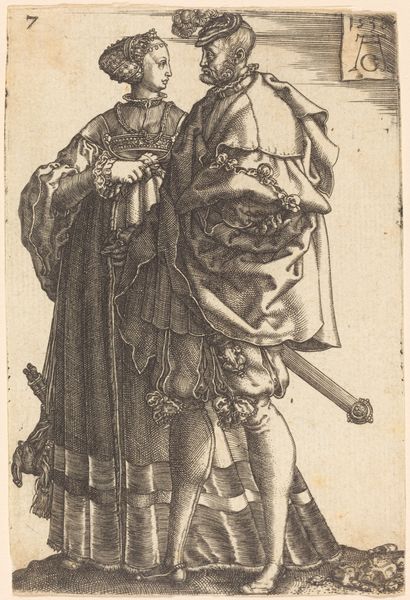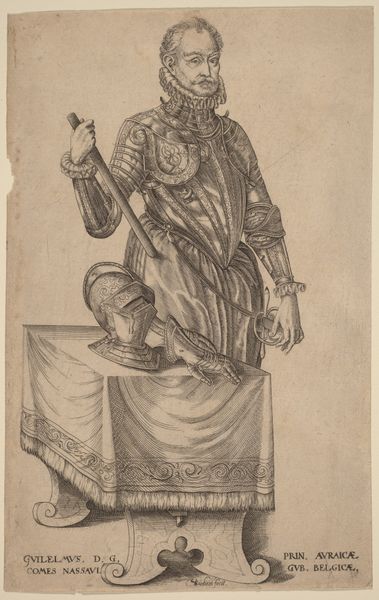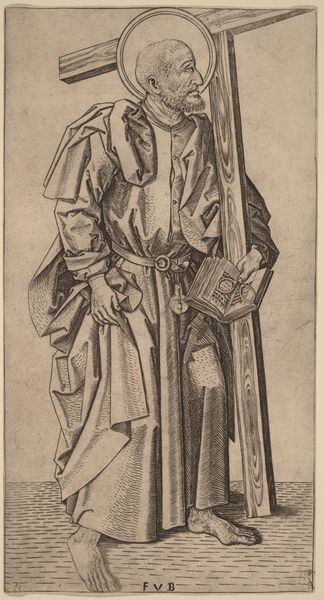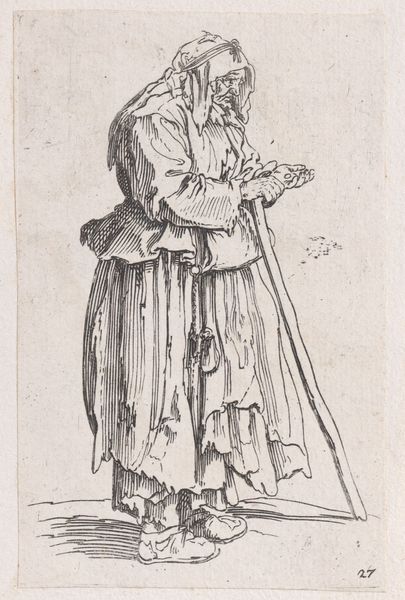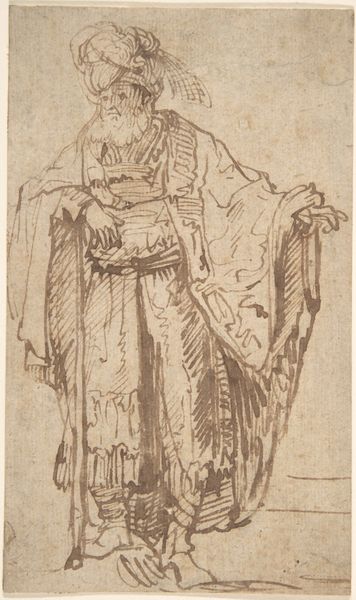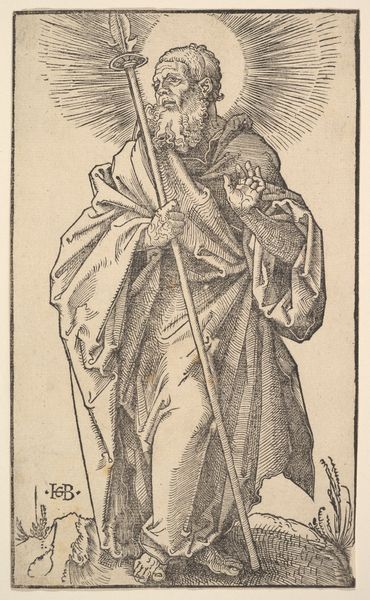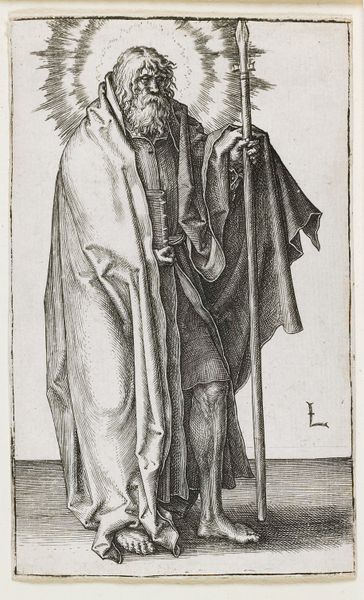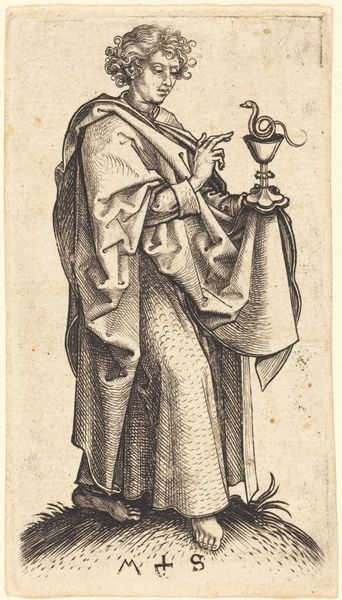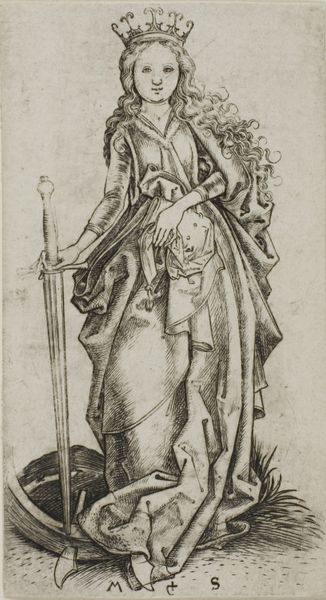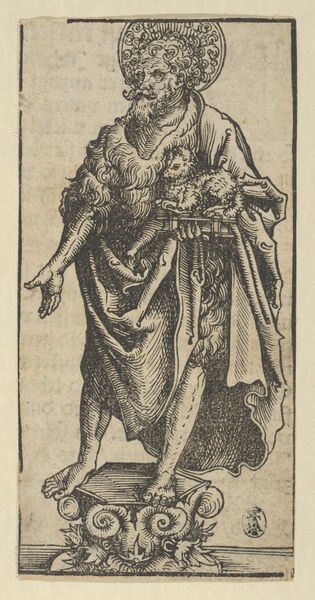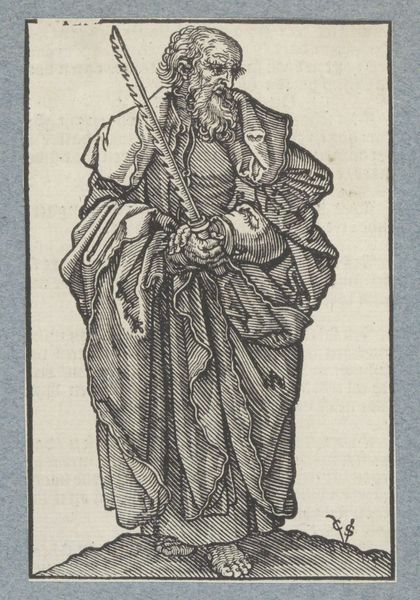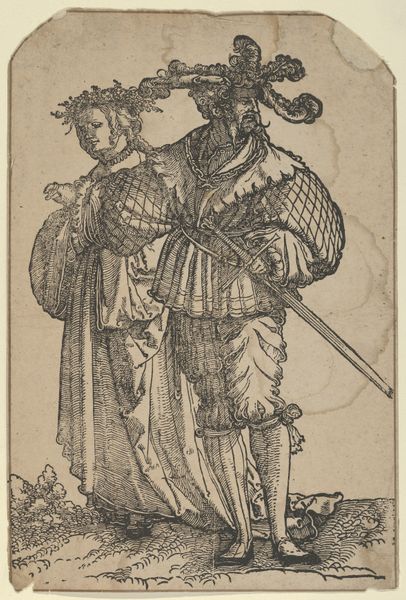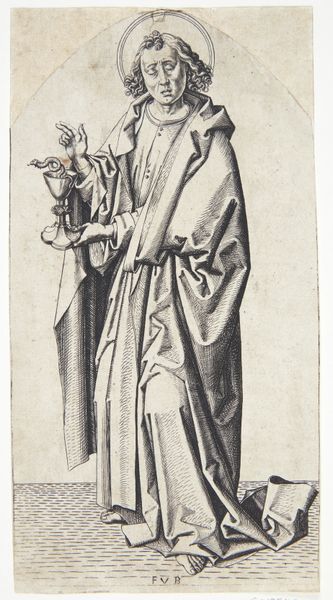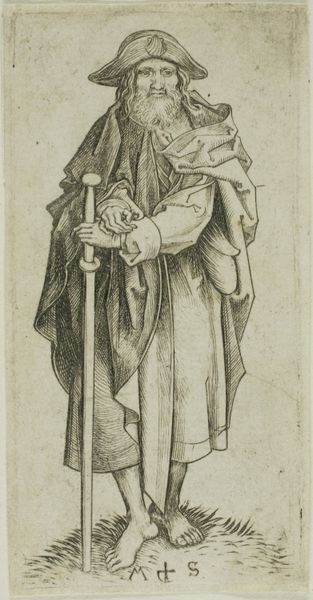
Dancing Couple, from The Large Wedding Dancers 1538
0:00
0:00
drawing, print, engraving
#
portrait
#
drawing
# print
#
figuration
#
line
#
genre-painting
#
northern-renaissance
#
engraving
Dimensions: Sheet: 4 11/16 × 3 1/8 in. (11.9 × 7.9 cm)
Copyright: Public Domain
Curator: Here we have Heinrich Aldegrever’s print, "Dancing Couple, from The Large Wedding Dancers," created in 1538. Editor: Immediately, I'm struck by the rather awkward intimacy conveyed through such precise, almost clinical lines. Curator: Yes, the engraving, a testament to Northern Renaissance printmaking, offers us a study in texture and form. Observe how Aldegrever meticulously renders the intricate details of their clothing—the lace, the folds, and puffed sleeves create an abundance of depth. Editor: And what story are those clothes telling? These aren't just textures; they are indicators of status in the midst of changing marital practices. A somewhat lewd encounter frozen mid-motion to be consumed and commodified by the wealthy. It speaks to complex, patriarchal exchanges happening under the veneer of merriment. Curator: Such details in clothing surely communicate status, but isn't there something as simple as compositional balance happening? The placement of the figures within the frame guides our eye across the surface, lingering over the textural variety offered by the fabrics. Note, for example, the repetition of circular forms between the hat, lace, and bouquet. Editor: But let's not strip it bare. The couple's physical closeness within a crowded marital market speaks of commodification inherent to arranged unions during the period, it brings questions about the role of women then, doesn’t it? Curator: Certainly, the figures represent a genre scene capturing a moment in time, but let’s notice how that moment is composed by hatching, cross-hatching, the use of lines, darks and lights. Those elements allow Aldegrever to create an experience that the artist controls completely. Editor: I will grant the artistry and craft behind that control. Still, it doesn't eclipse the fact that in mastering form, Aldegrever also mirrored back the prevailing structures of inequality that framed so many relationships of the era. Curator: Perhaps there are elements for us to observe that exist beyond the artist's direct intention, even against them. Editor: Exactly. Analyzing this image makes me wonder who this work was for. And how its meanings resonate across generations of changing social contracts.
Comments
No comments
Be the first to comment and join the conversation on the ultimate creative platform.
